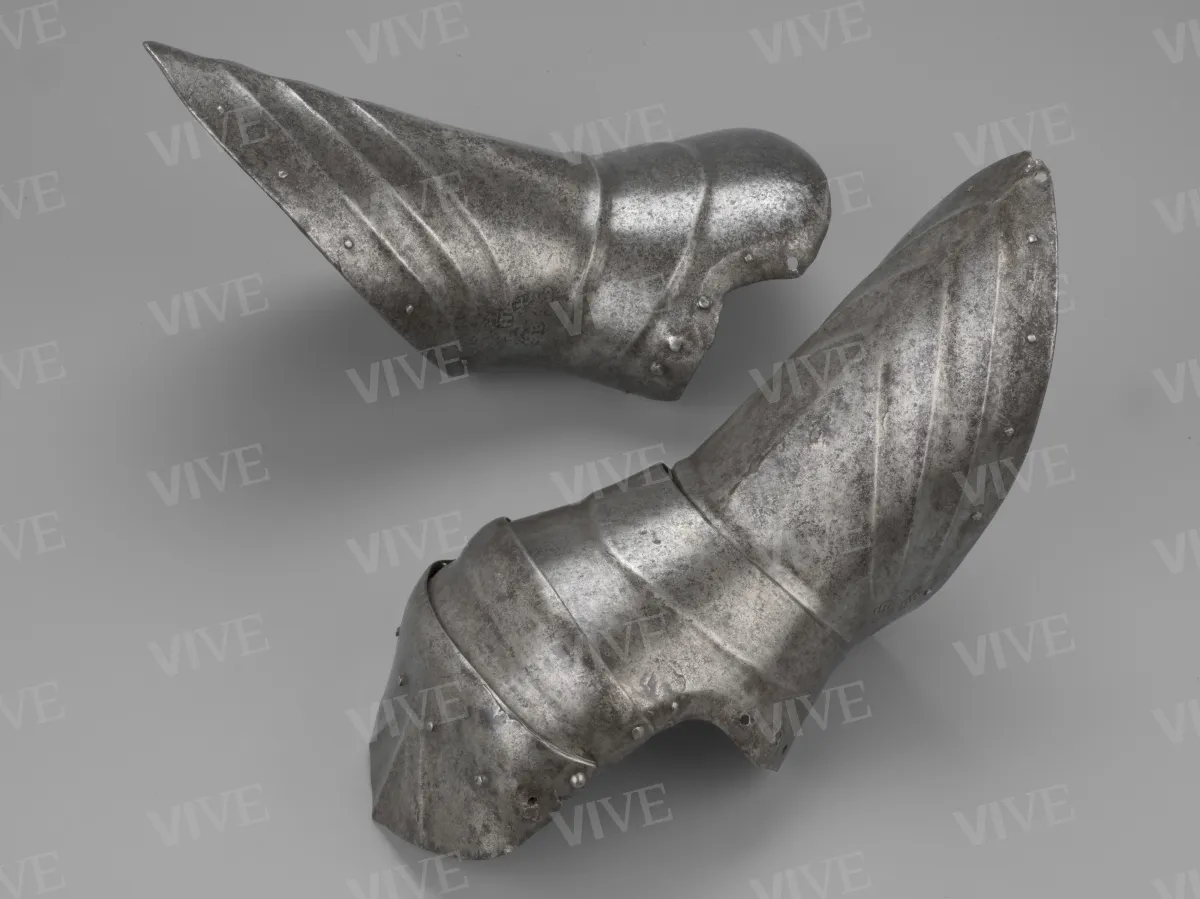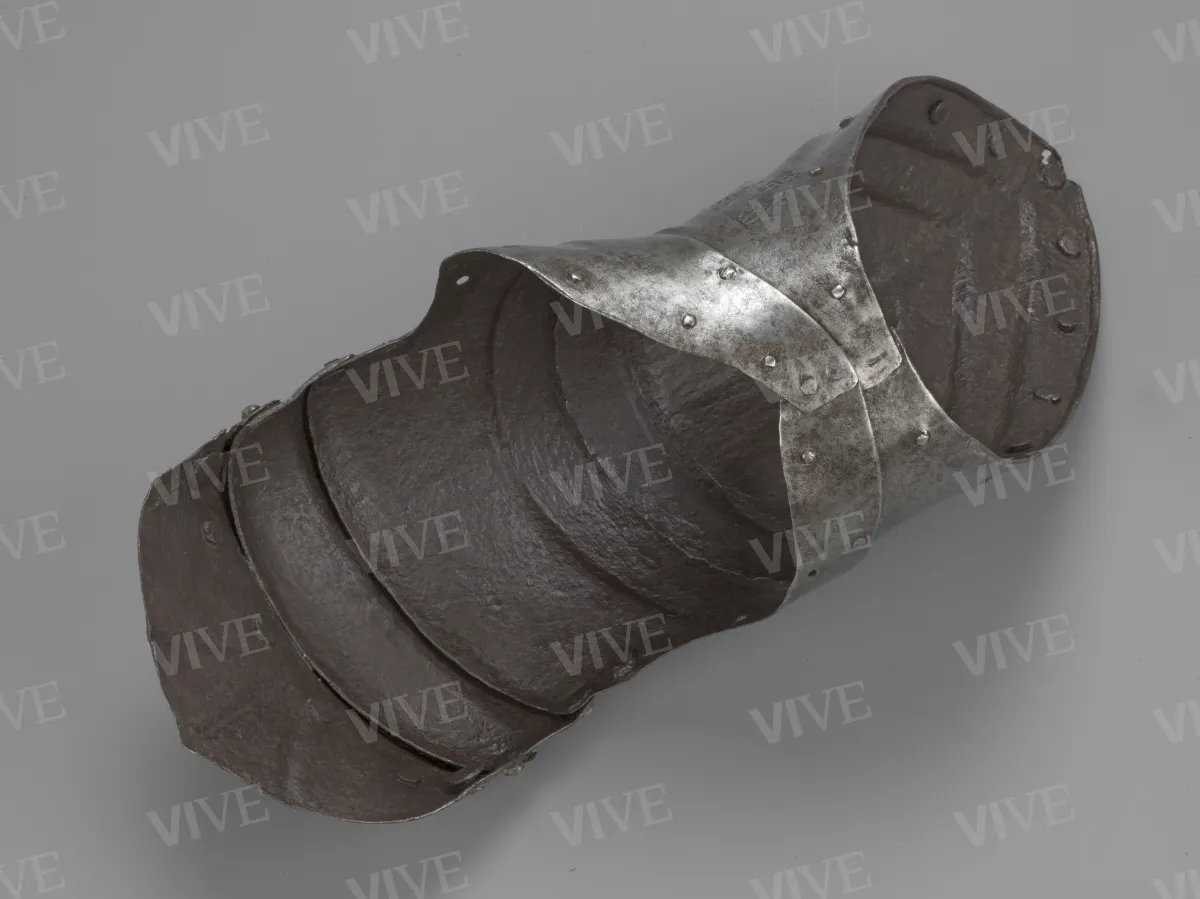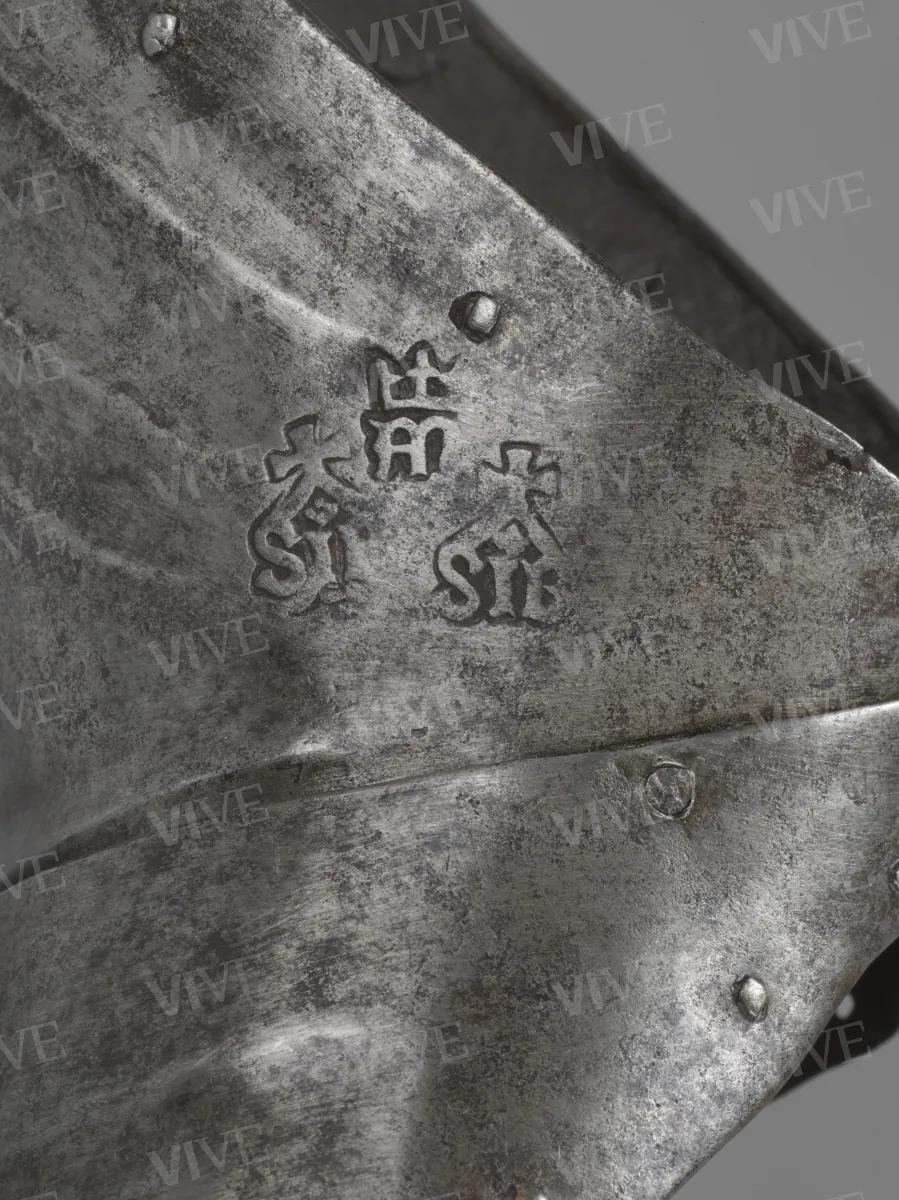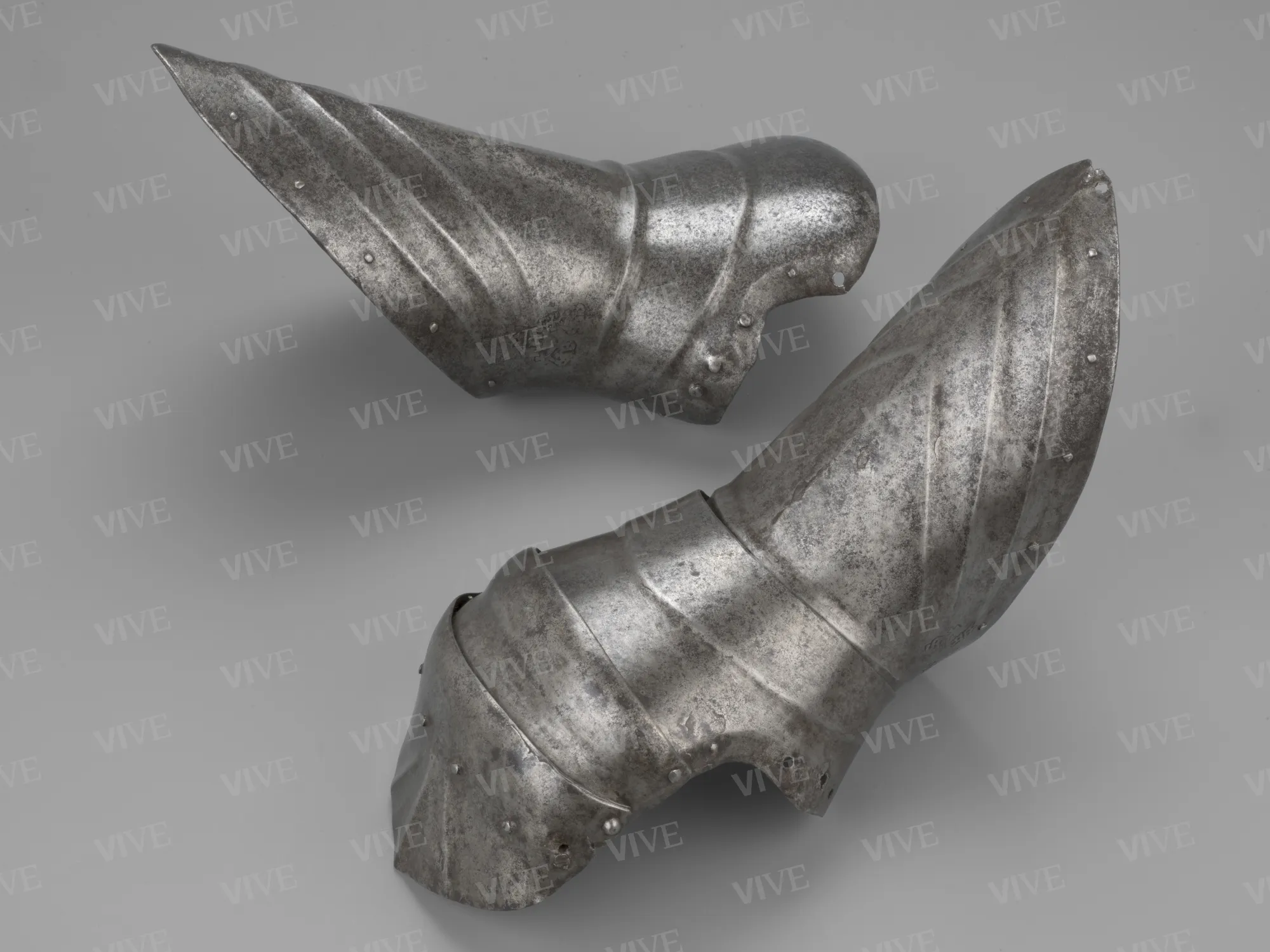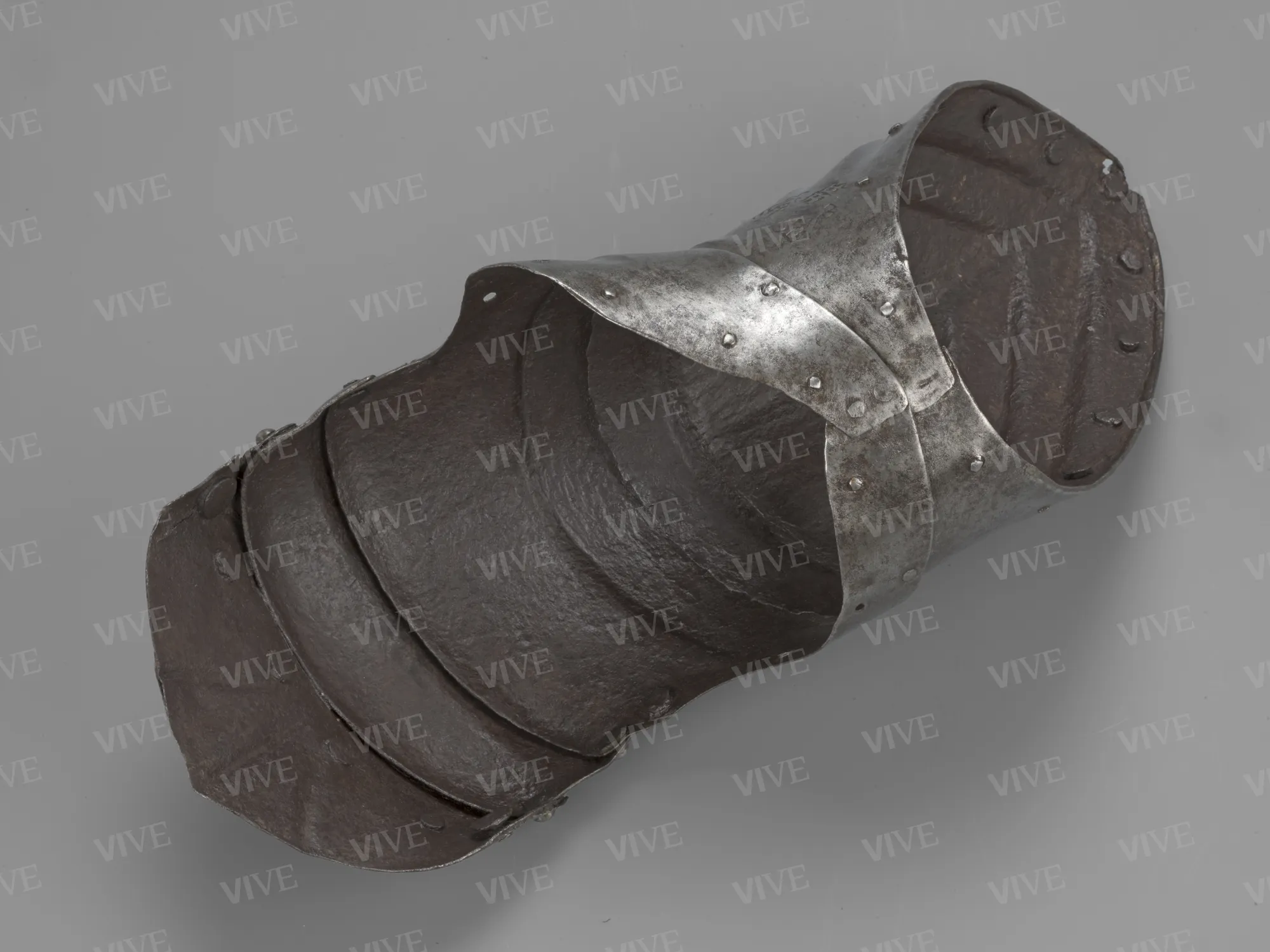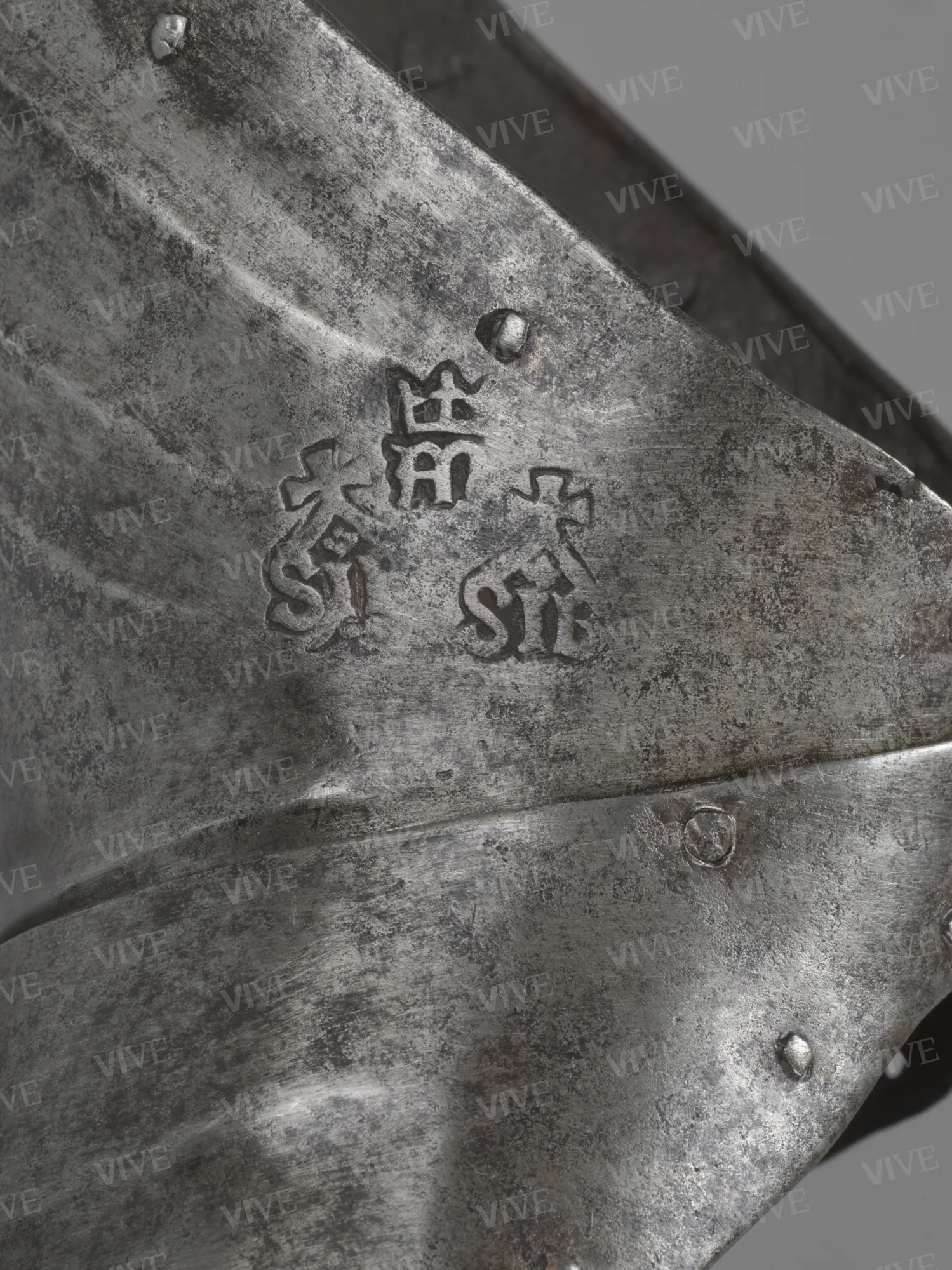Gauntlets
Antonio and Sebastiano Negroni called Missaglia Before 1496
These gauntlets, known as “mittene” when equipped with articulated plates, were integral components of a suit of armor. They provided exceptional resistance as defensive devices while allowing hand articulation for more effective weapon use in combat. The gauntlets feature the marks of Milanese gunsmiths Antonio and Sebastiano Negroni, also known as Missaglia.
These gauntlets, known as “mittene” when equipped with articulated plates, were integral components of a suit of armor. They provided exceptional resistance as defensive devices while allowing hand articulation for more effective weapon use in combat. The gauntlets feature the marks of Milanese gunsmiths Antonio and Sebastiano Negroni, also known as Missaglia.
Details of work
(b) manopola sinistra: altezza cm 26,6, larghezza cm 15,5; spessore cm 15,5.
Catalog entry
These gauntlets are designed with simplicity and functionality in mind. The left gauntlet (b), which does not include finger-guard plates, is constructed as a single piece where the back is joined to the vambrace. It features a central rib running along its length accompanied by three V-shaped grooves. Conversely, the right gauntlet (a) is more intricate and comprises four plates: the finger guard, ending in a point with three grooves; two mobile plates forming the back; and the vambrace plate, similar to the other in having a ribbed structure and V-shaped grooves. Notably, the finger guard retains smooth rivets akin to those found on the two vambraces (di Carpegna, 1969, p. 24, n. 122). Additionally, the right knob (a) bears marks from an impact near the joint of the back.
These gauntlets, also referred to as "mittene" gauntlets, evolved from simpler forms of hand protection such as leather gloves with rigid plates or chain mail gloves. Comprised of hinged and jointed metal plates, these protectors became widespread in the fifteenth century and continued to be used in the subsequent century. These devices were durable and provided good hand mobility (Gelli 1900, pp. 226–227 and 235–236; Oakeshott 2012, pp. 85–87; La Rocca 2017, pp. 59–63).
The pair of gauntlets bear the manufacturer’s mark: the initials “AN” surmounted by a crown, which indicates the weapons maker who had the ducal right to trade artifacts guaranteeing the quality of the product. This mark is associated with Antonio Missaglia (1416/1417–1496), whose family name was Negroni and who originated from Ello in the province of Lecco (Leydi 2013). The second brand, “SIB,” is less common and identifies Antonio’s son Sebastiano Missaglia (+1510/1512), who likely forged these gauntlets (Scalini 2018, p. 74, n. II.3). The presence of Antonio’s mark suggests the artifacts date to the spring of 1496, the year of Antonio's death and the transfer of the business to his sons Giovan Angelo and Sebastiano. The Missaglia family was known for producing high-quality weapons for both the Italian territorial states' main lords (Este, Gonzaga, and particularly Sforza, for whom they were official weapons makers) and for customers across Europe (Leydi 2013).
Various other pieces created by these weapons makers are documented, including a gauntlet that closely resembles this pair but exhibits a more elemental design. This particular piece is housed at the Metropolitan Museum in New York (inv. 29.158.228; Mickenberg 1985, pp. 370–371, n. 155). Additionally, there are similar gauntlets, which were formerly part of the Otto von Kienbusch collection and are now housed in the Philadelphia Museum of Art (Breiding 2020, pp. 44–45, n. 6).
These "mittene" gauntlets are part of the collection of Prince Ladislao Odescalchi (1846–1922), acquired by the Italian State in 1959 and housed at Palazzo Venezia since 1969. Rather than originating from a family armory, this extensive collection was assembled through deliberate acquisitions from both domestic markets, such as those in Florence and Rome, and international markets, including Paris and London, starting in the late nineteenth century. This reflects Odescalchi’s individual preferences (Barberini 2007).
Giulia Zaccariotto
Entry published on 27 March 2025
State of conservation
Good (a); poor (b).
Coats of arms, emblems, and marks
Crowned “AN” mark and double “SIB” mark, referable to the gunsmiths Antonio and Sebastiano Missaglia.
Provenance
Ladislao Odescalchi Collection (Odescalchi, nos. 713–714);
acquired by the Italian State, 1959;
Rome, Museo Nazionale di Palazzo Venezia, 1969.
Exhibition history
Rome, Museo Nazionale di Palazzo VeneziaAntiche armi dal sec. IX al XVIII. Già Collezione Odescalchi, May–July 1969;
Rome, Museo Nazionale di Castel Sant’Angelo, Rome, Museo Nazionale di Palazzo Venezia, Armi e potere nell’Europa del Rinascimento, July 26–November 11, 2018.
References
Gelli Jacopo, Guida del raccoglitore e dell'amatore di armi antiche, Milano 1900, pp. 226-227; pp. 235-236;
di Carpegna Nolfo (a cura di), Antiche armi dal sec. IX al XVIII. Già Collezione Odescalchi, catalogo della mostra (Roma, Museo Nazionale di Palazzo Venezia, maggio-luglio 1969), con schede a firma del curatore, Roma 1969, p. 24, n. 122;
di Carpegna Nolfo, Le armi Odescalchi, Roma 1976;
Mickenberg David (a cura di), Songs of Glory. Medieval Art from 900-1500: An Exhibition, catalogo della mostra (Oklahoma City, Museum of Art, 22 gennaio-29 aprile 1965), Oklahoma City 1985;
Barberini Maria Giulia, La collezione Odescalchi di armi antiche: storia della raccolta del principe Ladislao, in «Bollettino d’arte», s. VI, XCI, 2006 (2007), 137/138, pp. 101-114;
Fossà Bianca, Studio conservativo delle armi e armature Odescalchi. Nuove metodologie per la schedatura di una collezione, in «Bollettino d’arte», s. VI, XCI, 2006 (2007), 137/138, pp. 115-142;
Oakeshott Ewart, European Weapons and Armour. From the Renaissance to the Industrial Revolution, Woodbridge 2012;
Leydi Silvio, Negroni da Ello, ad vocem, in Dizionario Biografico degli Italiani, LXXVIII, Roma 2013;
La Rocca Donald J., How to Read European Armor, New York 2017;
Scalini Mario (a cura di), Armi e potere nell’Europa del Rinascimento, catalogo della mostra (Roma, Museo Nazionale di Castel Sant’Angelo; Roma, Museo Nazionale di Palazzo Venezia, 26 luglio-11 novembre 2018), con schede a firma del curatore, Cinisello Balsamo 2018, p. 74, n. II.3;
Breiding Dirk H., Arm and Armor. Highlights from the Philadelphia Museum of Art, Philadelphia 2020.

